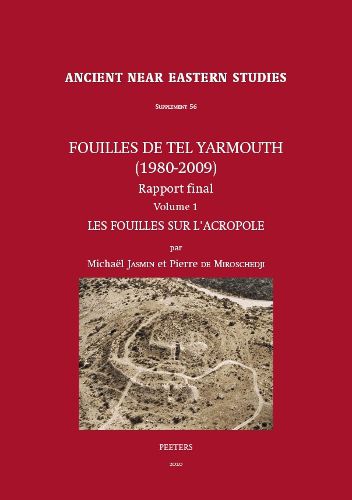Readings Newsletter
Become a Readings Member to make your shopping experience even easier.
Sign in or sign up for free!
You’re not far away from qualifying for FREE standard shipping within Australia
You’ve qualified for FREE standard shipping within Australia
The cart is loading…






Tel Yarmuth is a major archaeological site of the southern Levant,
located 25 km south-west of Jerusalem. In the Early Bronze Age, it was
the largest fortified city-state of this region. Long after its
abandonment around 2400 BCE, it was reoccupied on the acropolis only,
which remained settled more or less continuously from the Middle Bronze
Age II (17th-16th cent. BCE) to the Early Byzantine Period (4th cent.
CE). The site is identified with the biblical settlement of Yarmuth and
the Byzantine village of Iermochos. This volume is the first monograph
of the final publication of the excavations conducted between 1980 and
settlement history of Yarmuth was established. It provides an account of
those excavations, a detailed presentation of the stratigraphy,
extensive descriptions of the pottery and the various archaeological
artefacts and ecofacts, and a discussion of the archaeological and
biblical contexts of the site’s history. The continuous archaeological
sequence from the Late Bronze II to the end of the Iron Age I (c.
1200-950 BCE) is especially noteworthy. It illustrates the fate of a
Canaanite village in the shadow of larger regional centers during the
momentous centuries that witnessed the decline of the Canaanite
polities, the rise of the Philistine city-states and the emergence of
the kingdom of Judah.
$9.00 standard shipping within Australia
FREE standard shipping within Australia for orders over $100.00
Express & International shipping calculated at checkout
Tel Yarmuth is a major archaeological site of the southern Levant,
located 25 km south-west of Jerusalem. In the Early Bronze Age, it was
the largest fortified city-state of this region. Long after its
abandonment around 2400 BCE, it was reoccupied on the acropolis only,
which remained settled more or less continuously from the Middle Bronze
Age II (17th-16th cent. BCE) to the Early Byzantine Period (4th cent.
CE). The site is identified with the biblical settlement of Yarmuth and
the Byzantine village of Iermochos. This volume is the first monograph
of the final publication of the excavations conducted between 1980 and
settlement history of Yarmuth was established. It provides an account of
those excavations, a detailed presentation of the stratigraphy,
extensive descriptions of the pottery and the various archaeological
artefacts and ecofacts, and a discussion of the archaeological and
biblical contexts of the site’s history. The continuous archaeological
sequence from the Late Bronze II to the end of the Iron Age I (c.
1200-950 BCE) is especially noteworthy. It illustrates the fate of a
Canaanite village in the shadow of larger regional centers during the
momentous centuries that witnessed the decline of the Canaanite
polities, the rise of the Philistine city-states and the emergence of
the kingdom of Judah.